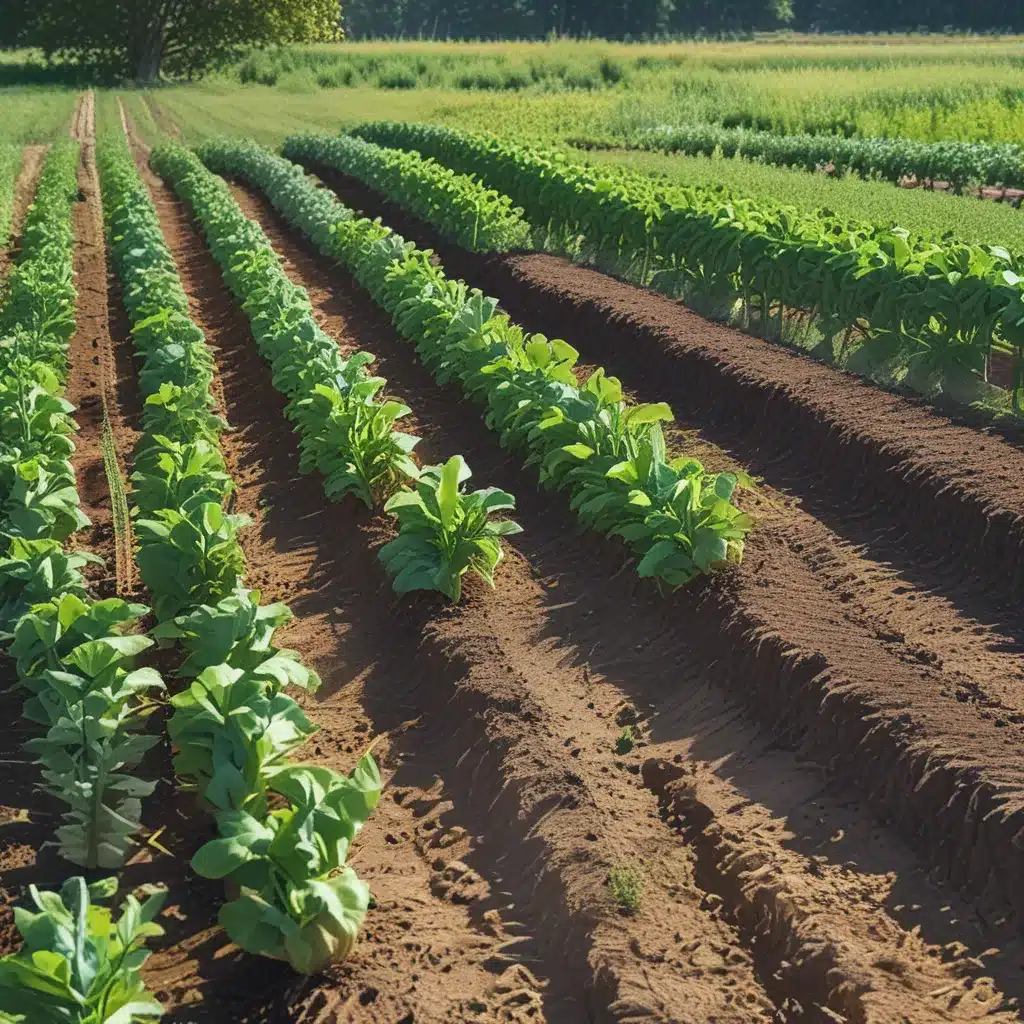
The Secret Sauce to a Thriving Garden
Oh, the joys of gardening! There’s nothing quite like the satisfaction of plucking a sun-ripened tomato straight from the vine or harvesting a bundle of crisp, leafy greens. But let me let you in on a little secret – the key to a truly bountiful and healthy garden lies in the art of crop rotation.
Now, I know what you’re thinking – “Crop rotation? Sounds like something straight out of a farming textbook!” But trust me, my friends, this time-honored practice is the secret sauce that can take your home-grown goodness to the next level. And the best part? It’s surprisingly simple to implement, even for the most novice of green thumbs.
The Basics of Crop Rotation
Okay, let’s start with the basics. Crop rotation is the practice of growing a variety of crops in succession on the same piece of land. The idea is to alternate between different plant families, each with their own unique nutritional needs and pest/disease resistance.
Think of it like this – imagine you’ve been eating the same meal every single day. After a while, you’d start to feel a bit, well, bleh, right? Your body craves variety and balance. The same principle applies to your garden. By rotating your crops, you’re ensuring that your soil stays nourished and your plants stay happy and healthy.
The Benefits of Crop Rotation
Now, let’s dive a little deeper into the benefits of this gardening superpower. First and foremost, crop rotation helps to maintain soil fertility. Different plants have different nutrient requirements, so by rotating them, you’re essentially giving your soil a well-rounded “diet.” This means your plants can thrive without draining the life out of your precious soil.
But the benefits don’t stop there. Crop rotation also helps to break the cycle of pests and diseases. Picture this – you’ve got a garden full of tomatoes, and suddenly, a hoard of pesky aphids comes marching in. If you were to plant tomatoes in that same spot next season, those aphids would be waiting with open (creepy-crawly) arms. But by rotating your crops, you’re essentially denying them their favorite food source, forcing them to look elsewhere.
And the cherry on top? Crop rotation can even help to reduce the need for synthetic fertilizers and pesticides. By keeping your soil healthy and your plants thriving, you’re creating an ecosystem that’s naturally resistant to the nasties. Win-win-win!
The Four-Bed Crop Rotation System
Now, I know what you’re thinking – “Okay, this all sounds great, but how do I actually do it?” Well, my fellow gardeners, I’ve got the perfect solution for you: the four-bed crop rotation system.
Hear me out on this one. Divide your garden into four separate beds or zones. In each bed, you’ll plant a different plant family, rotating them every season. So, for example, you might have bed one dedicated to the cabbage family (Brassicaceae), bed two for the carrot family (Umbelliferae), bed three for the bean family (Leguminosae), and bed four for the tomato family (Solanaceae).
The beauty of this system is that it’s super easy to keep track of, and it ensures that you’re always giving your soil the perfect balance of nutrients and pest/disease protection. Plus, it’s adaptable to gardens of all sizes – whether you’ve got a sprawling backyard or a cozy urban patio, you can make this system work for you.
Putting it All Together
Alright, now that we’ve covered the basics, let’s talk about how to actually put this into practice. The key is to really understand the different plant families and their unique needs.
For example, the cabbage family (Brassicaceae) are known as heavy feeders, meaning they gobble up a lot of nutrients from the soil. So, you’ll want to follow them up with a lighter feeder, like the onion family (Alliaceae). This way, you’re not depleting your soil’s resources.
| Plant Family | Examples | Nutrient Needs |
|---|---|---|
| Brassicaceae (Cabbage) | Broccoli, Cauliflower, Kale | Heavy Feeders |
| Umbelliferae (Carrot) | Carrots, Parsnips, Celery | Moderate Feeders |
| Leguminosae (Bean) | Peas, Beans, Clover | Nitrogen Fixers |
| Solanaceae (Tomato) | Tomatoes, Peppers, Eggplants | Heavy Feeders |
| Alliaceae (Onion) | Onions, Garlic, Leeks | Light Feeders |
And don’t forget about those nitrogen-fixing superheroes, the legumes! By planting them in one of your beds, you’re actually replenishing the soil with that all-important nutrient. It’s like nature’s own little fertilizer factory.
Now, I know what you’re thinking – “But what if I don’t have enough space for four separate beds?” No need to worry, my friends. You can easily adapt this system to a smaller garden by rotating your crops within a single bed. Just be sure to keep track of your planting schedule, either with a handy garden calendar or a chalkboard in the shed. Trust me, it’ll save you from a lot of head-scratching come planting time.
Embracing the Adventure of Crop Rotation
And there you have it, folks – the ABCs of crop rotation, straight from the mouth of a passionate gardener. But don’t just take my word for it. Head on over to Thornappple CSA and explore all the incredible resources they have to offer. From seasonal gardening advice to community workshops, they’ve got everything you need to become a crop rotation pro.
So, what are you waiting for? Grab your trowel, put on your best garden-inspired outfit, and get ready to embark on the adventure of a lifetime. Your garden’s productivity is about to skyrocket, and the best part? You get to reap the delicious rewards. Happy gardening, my friends!



